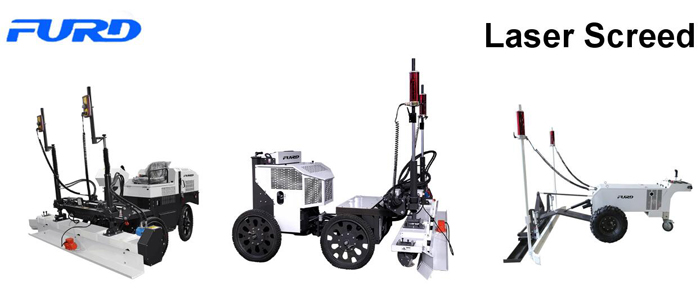 Recently, the Ministry of Science and Technology has issued a “letter to carry out the 2013 project organization work for the country’s major scientific instrument and equipment development special projectâ€. The issuance of this letter also marks the new round of national major scientific instrument and equipment development project (hereinafter referred to as: major instrument special project ) Startup. The major equipment special project was launched in July 2011. In the past two years, a total of 119 projects have been supported and the country has allocated a total of 1.8 billion yuan.
Recently, the Ministry of Science and Technology has issued a “letter to carry out the 2013 project organization work for the country’s major scientific instrument and equipment development special projectâ€. The issuance of this letter also marks the new round of national major scientific instrument and equipment development project (hereinafter referred to as: major instrument special project ) Startup. The major equipment special project was launched in July 2011. In the past two years, a total of 119 projects have been supported and the country has allocated a total of 1.8 billion yuan. Compared with the requirements for 2012 organizational work, the highlights and changes in 2013 major instrument special work requirements are highlighted:
1. The direction of support has changed, and clearly indicates the types of instruments that are not supported.
The work requirements clearly stated that the focus was on "key scientific instruments and equipment, scientific equipment, sample pretreatment equipment, high-end electron microscopes, near-infrared analysis instruments, electronic measuring instruments, and other major scientific instruments and equipment", among which scientific instruments and equipment key components, scientific instruments Equipment sample pretreatment equipment and near-infrared analysis equipment are the new support directions for 2013. In addition, the work requirements also pointed out that “general instrument principle and method research, instrument development work with unclear commercialization prospects are not part of the instrument specific categoryâ€. Specific to the type of instrument, it clearly indicates “clinical medical instruments, production equipment, mechanical equipment, and Platform construction, etc., does not belong to the direction of instrument special support."
2. Clearly support enterprises in assuming the main body of the project and improve the requirements for the enterprise.
The 2013 work requirement clearly stated that “supporting qualified companies should take the leadâ€. However, there are stringent requirements for enterprises led by enterprises or enterprises to undertake industrialization work. For example, enterprises need to register in mainland China, enterprises are high-tech enterprises or meet the same conditions, and projects are in line with key development directions of enterprises.
In addition, the work requirements also pointed out that “If the company takes the lead in undertaking the project, the self-financing R&D funds invested by the enterprise shall not be lower than the national funding; if the non-lead project is undertaken, but the enterprise undertakes the industrialization work, the self-raised R&D funds invested by the enterprise shall not be lower than The nationally allocated funds that the enterprises have invested in self-raised R&D funds shall be used for project research and development activities, and shall not be used for industrialization capacity building of production lines, plant buildings, etc."
3. Implement the financial support for the first time to ensure the success of the support project.
In the work requirements, new measures to explore financial support for the reform of the nodes were stipulated. “For enterprises to lead projects, they must establish projects first. The first half of the project is mainly carried out by the self-financing entity, and the special funds are used to finance 10%; after the mid-term evaluation, it is confirmed to have continued development significance. In the second half of the year, it is mainly supported by special funds. "This should be the biggest change since the implementation of major instrumental specialties, emphasizing risk sharing.
4. Make clear what the project covers and the responsibilities of the participating units.
The work requirements specify that each project should include “instrument development (including software development), application development, and engineering development, and other types of work. At the same time, it should also propose a project industrialization planning program†and require “in addition to the instrument and equipment development unit, Industrialization units and application units should also start with project design and participate in the organization and implementation of the project."
5. Four new project organization departments (regions) were added, and pilot areas were first shown.
In the work requirements, four new organizational units, namely China Aerospace Science and Technology Corporation, China Aerospace Science and Industry Corporation, China Shipbuilding Industry Corporation, and China Aviation Industry Corporation, have been established, and Tianjin, Zhejiang, Sichuan, Guizhou, and Shaanxi have been identified as five pilot regions. .
FURD Ride On Laser Screed:
-Used high accuracy laser device, close loop control technology and precision integrated hydraulic system, and microcomputer automatic control.
-The flat and dual slope can be fully automatic controlled by the transmitter. For the complex floor which has high requirement for drainage, the 3-D floor processing system can be used.
-Steering, forward and reverse of the machine are all controlled by the integrated handles. Operation buttons and controller which are located on the one side of th seat, is user-friendly.
FURD walk behind Laser Screed :
-Adopts imported laser transmitter and receiver.
-Adopts Honda gasoline generator with electric start.
-Two kinds of tyres optional.

FURD factory also produce the below machines:
Vibratory Road Roller, Power Trowel , Light Tower , Road Repair Machine, Road Marking Machine.
For more information of our products, please feel free contact with us, we are at your service for 24 hours.
Laser Screed
Laser Screed,Concrete Laser Screed,Laser Screed Machine,Copperhead Laser Screed
Jining Furuide Machinery Manufacturing Co., Ltd. , http://www.furdroller.com
